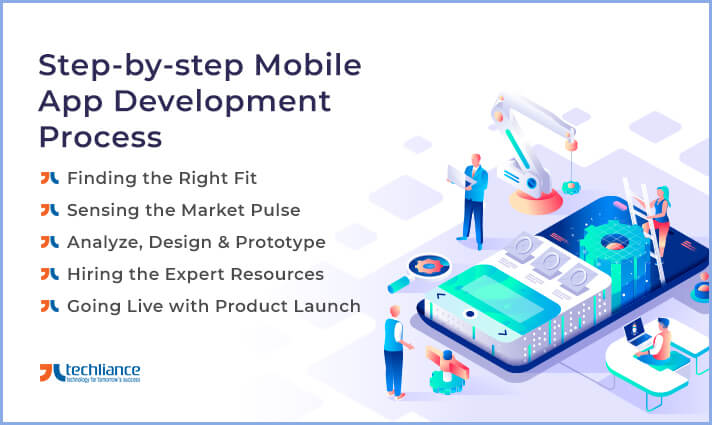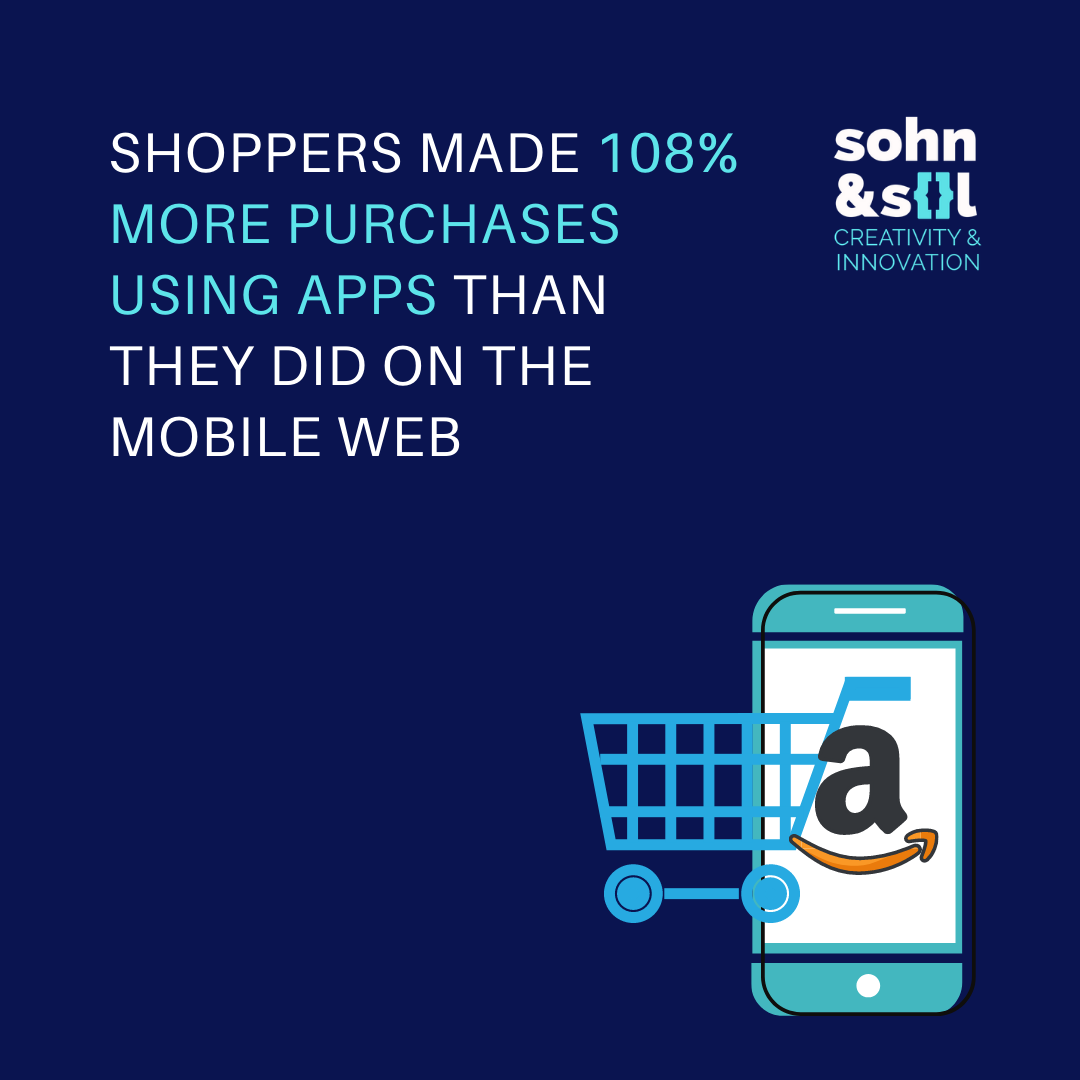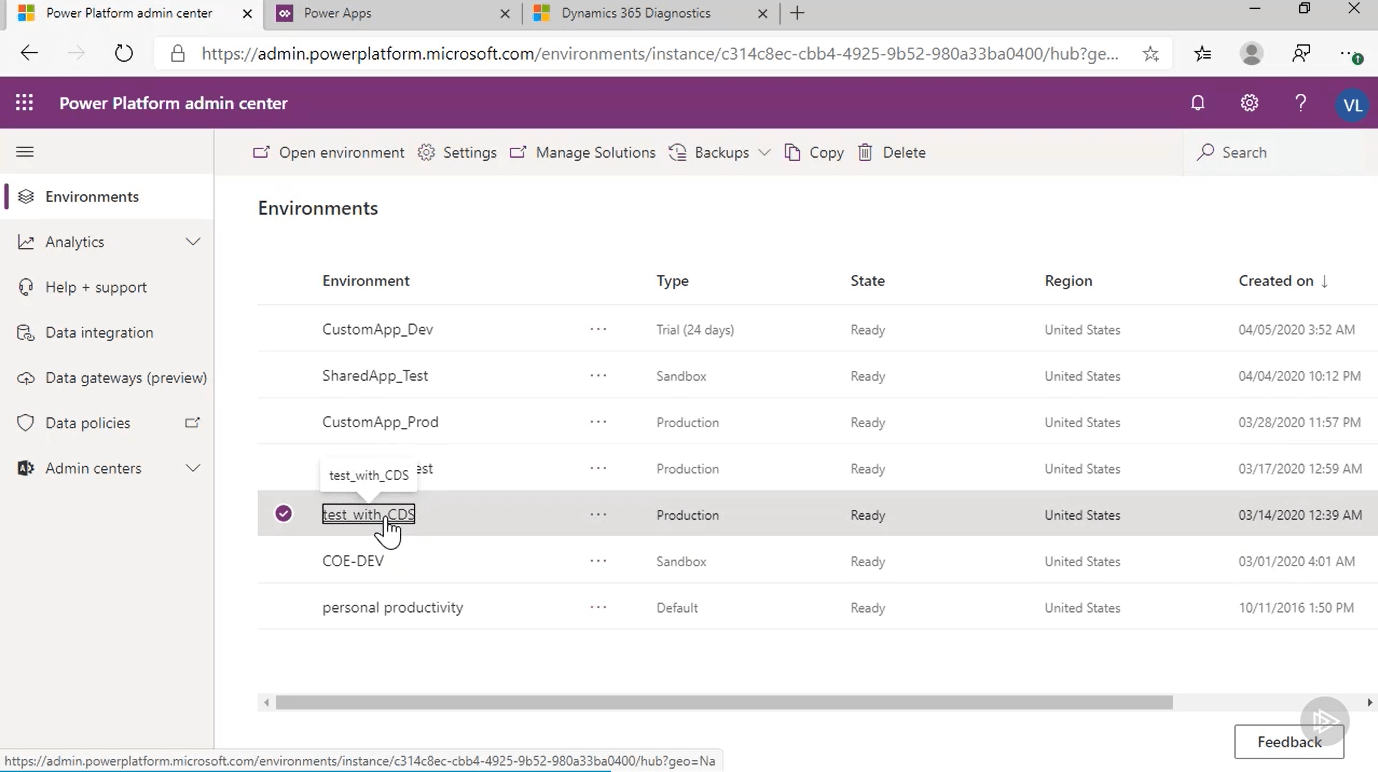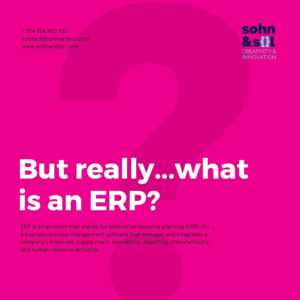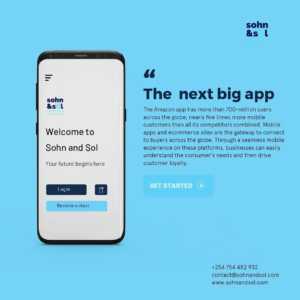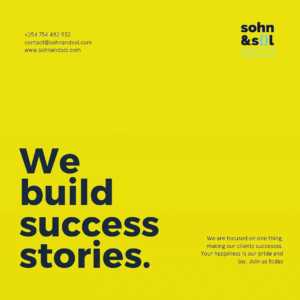- Whenever we get a client that requests for a Mobile App Development Services. The first question I ask would be “Who are your would-be-users after the mobile app is published to the online stores?” I also ask for the value the intended users would get out of this mobile app and the incentive for them to use your app rather than the solutions they are presently using.
- As a business we typically vet our clients for mobile Apps especially carefully since making customizations on mobile applications may not be as straightforward as customizing websites or ERP and CRM implementations once they are complete, this makes customizations more costly. Typically we want to hear a clear direction and design idea coming from our clients otherwise we would turn down the project.
Ecommerce Mobile App Development Project Delivered at Sohn and Sol Technologies Ltd.
If you are considering hiring a competent Mobile App Development Team for your next project go to https://sohnandsol.com/services and click on “START A PROJECT”
3. If you are interested in the code used in our projects you can also find these at https://github.com/Breldan-MuturiAfter a clear direction is laid out we start our design process using Figma. We use figma to design our Mobile App Development Projects because with Figma our development team is able to collaborate more easily and our clients also have visibility over the design process being able to leave comments on the parts of the design they want to make changes to. We prefer our clients being able to give their contribution to the design from the get go. As with many projects Mobile App Development projects work best when the reviews come earlier rather than later.
4. With Figma we can create mock ups that mimic even the functionality of the App. We then invite the client to view the mock ups and approve.
5. After the client has approved the designs we open the move into development of the app. In the beginning we don’t consider so much the quality of the code. We use custom code rather than any of the popular libraries out there in implementing the functionality of the mobile application. The reason for this is we’d like to ensure the different functionality in the app works together cohesively in the early stages of development before committing our functionality to the constraints of any libraries out there.
6. Whereas the functionality of custom code is flexible, there are many vulnerabilities that can be exploited by would-be-hackers. Custom code is also not always optimized for performance because the primary objective for using custom code is to ensure different bits of the intended functionality work well together. However, after we are satisfied the functionality of the app we turn to third-party libraries and platforms we can leverage to optimize costs and minimise running costs.
7. We always start by implementing third party platforms for user authentication. User authentication is at the centre of most applications so the service providers we consider at this stage will most likely be the same service providers we leverage for related functionality throughout the app. For instance using firebase authentication for mobile applications means we will also leverage firebase messaging for push notifications.
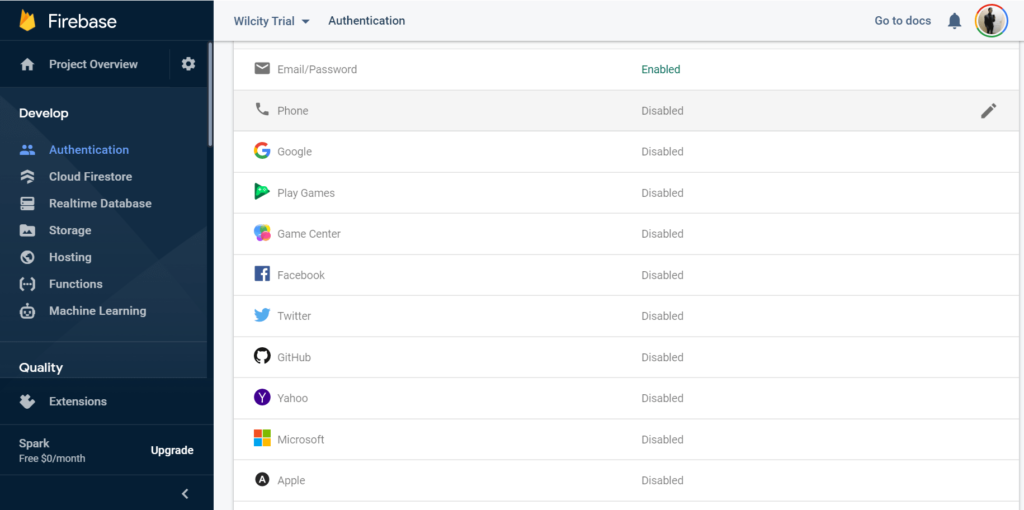
9. After implementing all the required functionality and doing our testing we then move to publish the app to the stores. We publish the app through the Play Store and App Store.
10. After the app is approved we set up a Google Adwords Account and prepare campaign to drive your target audience to download your mobile application. This will allow your app to gather those early adopters who would spread word about your app to friends and family to drive growth.
All this to ensure that your project is a success. The key here is to keep constant, clear communication with our clients throughout the process.
